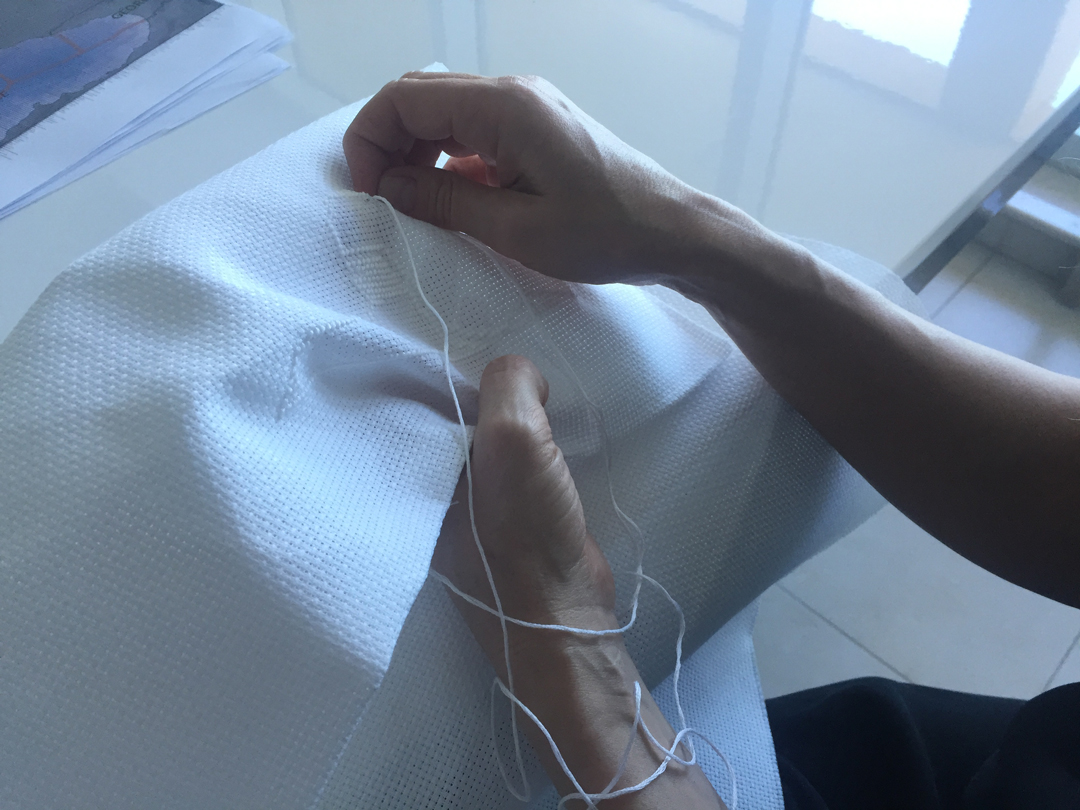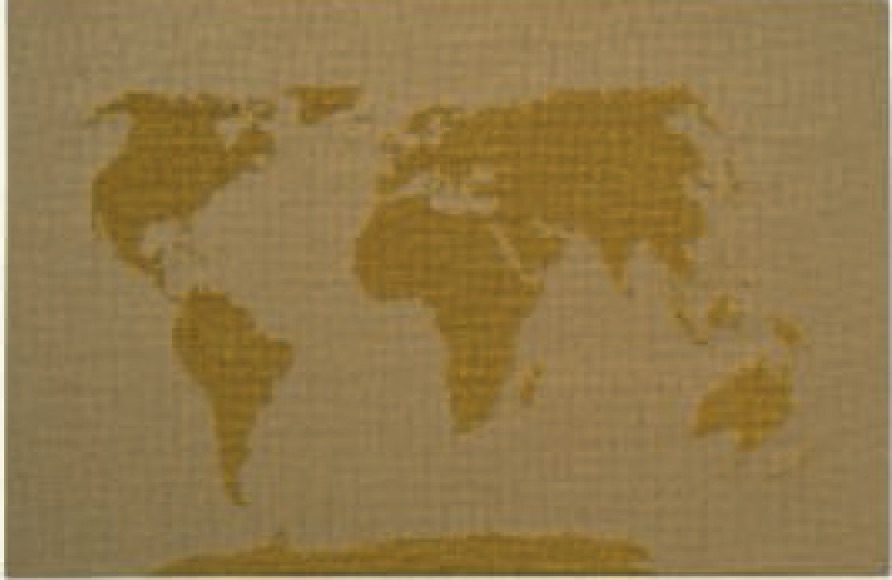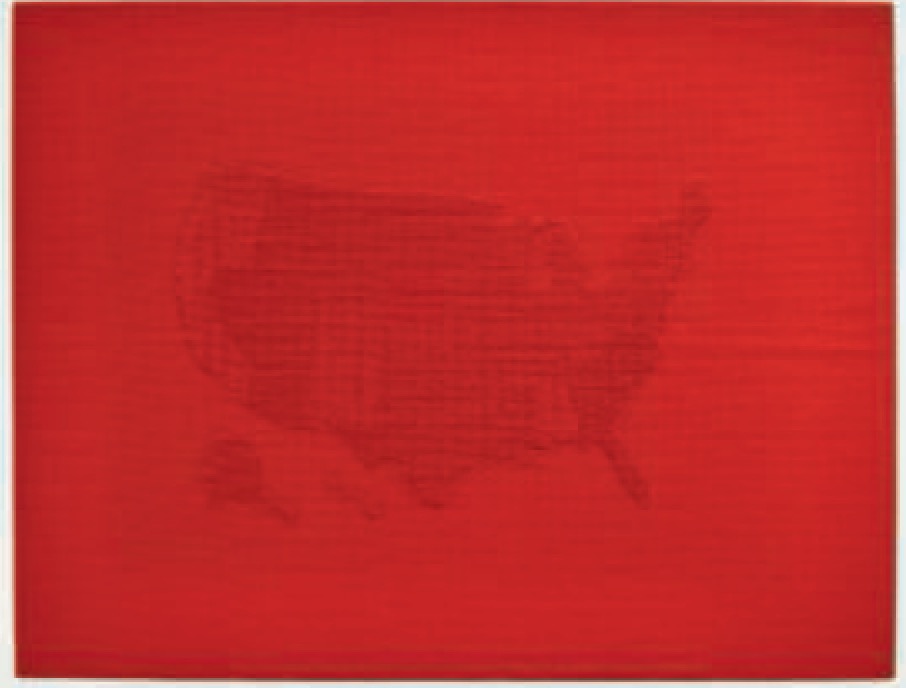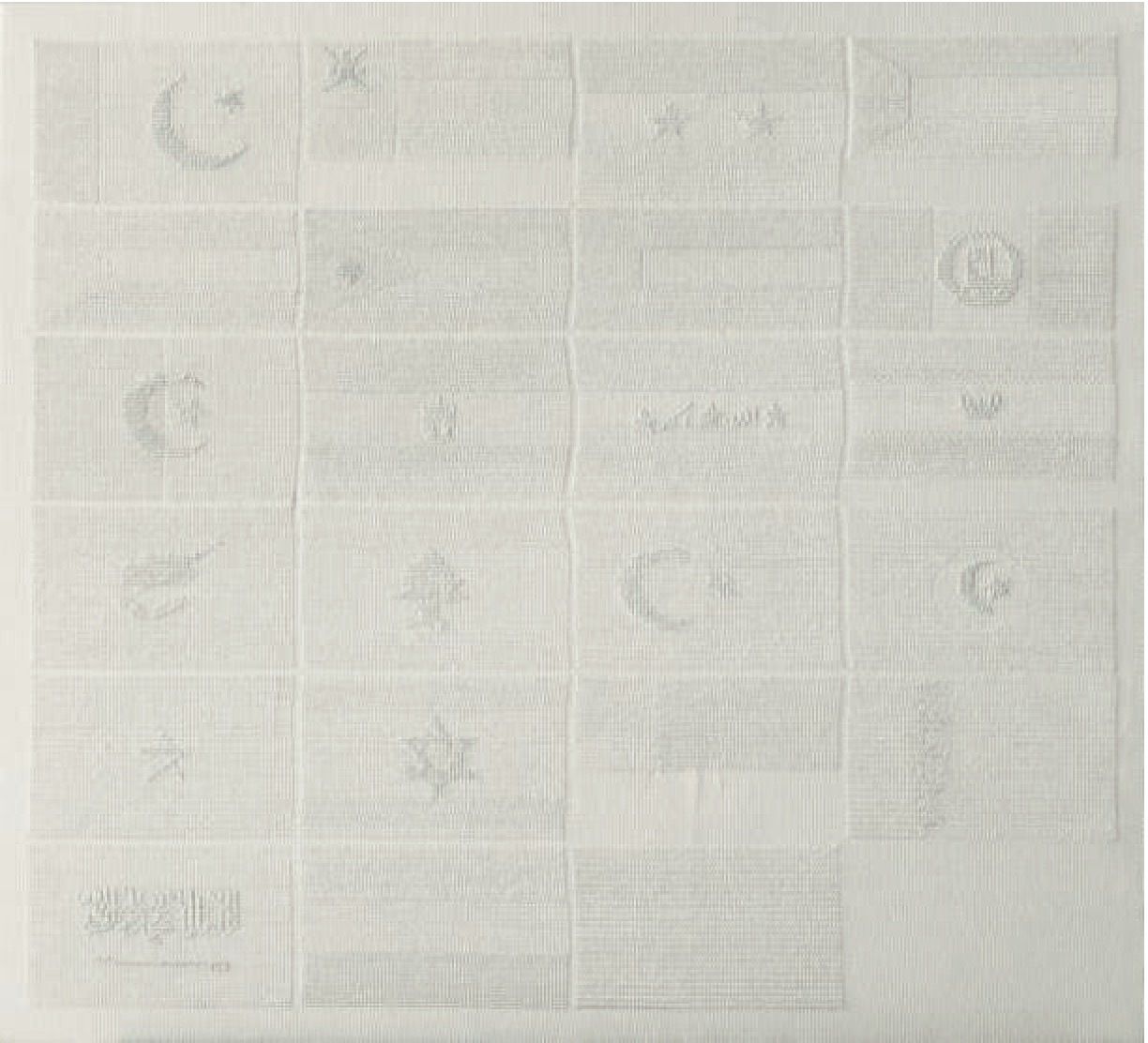
Talking Textiles with Cristiana de Marchi
The Turin-born, Arabic peninsula-dwelling, artist lets us in on a few secrets from her studio
Cristiana de Marchi moved from her native Turin, Italy to the Arabic peninsula in 2006, and before that to Beirut in 1994, where she found a scenario that could scarsely be more different. Art in Dubai at the turn of the millennium was indeed an anodyne proposition. The days when creative activity was regulated by the austere Emirates Fine Art Society were slowly coming to an end.
Yet, despite this new freedom of expression, the idea of closely monitoring art that could potentially constitute ‘an act of disturbance’ was still in the air, and it is perhaps for this reason that most artists chose to adopt strategies engaged with the everyday and the mundane object. In this regard, de Marchi’s chosen media – soap bars, household objects, tapestries and embroideries – turned out to be the ideal outlet for a practice that would borrow the purity of Minimalism while addressing issues related to her gender and global socio-politics.
In contrast with Alighiero Boetti, another artist from Turin familiar with the area as well as with the craft of embroidery, de Marchi’s maps are rigorously monochromatic. Europe, in particular – a grating concentration of different colours and symbols in Boetti’s work – becomes in de Marchi’s version a surprisingly uniform entity, bringing to the front the current debate over the political and economic unity of the continent in a critical but measured manner. Subjected to the same treatment, an even more delicate situation like the Israel and Palestine territorial dispute comes across exactly as that: delicate.
Here, the Vitamin T: Threads and Textiles in Contemporary Art featured artist tells us, among other things, about feeling "inbetween", the importance of tactility (and how it's so often frustrated in a gallery setting).

Who are you and what’s your relationship with threads and textile art? Someone “in between”, always trying to transcend my previous selves. Threads are a family connection therefore I have avoided using them for many years. I finally resolved the dilemma in 2004, when I started working on my first embroidered composition, an eight panels mnemonic map of my hometown, Turin.
What part does the tactility of the material play in your desire to work with it? Tactility is important as long as it is negated. Issues of accessibility are at the core of my practice, both on an individual and on a social scale: access to rights, memory degradation, identity redefinition, geo-political negotiation, etc.: what is still accessible in the process? What is lost? The layers I create can be appealing to the viewer, they can seem inviting to have a tactile experience, which is nevertheless frustrated by the very nature of the exhibition setting – an art gallery or a museum. Who would touch an artwork within that spatial and cultural context?
Why do you think there’s an increased interest in textile art right now? I perceive an increased interest around underrepresented (especially women) artists and underrepresented, or even neglected, practices in general. Often these practices are expressed in media which are adopted by both art and crafts, with the definition of the boundaries between the two disciplines shifting over time. The coincidence of these two aspects – a re-evaluation of predominantly “craft” media and of underrepresented practices – could be an answer. Or perhaps, it is just as simple as the art market's volatile need to move, to focus on and periodically exploit different creative niches.

Everyone uses textiles in their daily life, does that help or hinder their standing as a fine art material? Everyone recurs to letters in various combination and level of mastery, which isn’t a limitation for poets to express and being acknowledged because of their use of words. Everyone uses crayons and pastels in simplified creative manifestations, which does neither help nor hinder their standing as a fine art material.
Whose textile art do you admire? Most likely, several of the other artists featured in this survey. I am not interested in the technical qualities of the work, not when it comes to textiles, at least. I might be stupefied by the expertise involved in creating a piece when it comes to disciplines I don’t quite master, rather than those I do adopt. There are technical solutions for nearly any idea one might want to realise, in any chosen media. The more one knows his/her own medium, the more one can find solutions to problems and even anticipate them and express ideas in new ways. A daily exercise becomes a substantial tool for developing one’s own practice.
What are the particular challenges and rewards of working in this medium? I wouldn’t bore anyone with the physical details of practice. The main challenge for me is time, as all my works are handmade, and I make them all by myself. Therefore, I need an enormous amount of hours to complete the bigger compositions, which is what I tend to enjoy more and more.

If I buy textile art how should I care for it? Better to ask a conservator for any specific questions that would go beyond the typical answers also applicable to paintings and paperwork.
What’s next for you, and what’s next for threads and textile art? I try not to segment time with reference to events. Next for me is my next piece: I need to work everyday, I never finalise production to upcoming shows, I move from one piece to the following one based on my own sense of evolution in the work. What’s coming next is already nested in my today’s work, yet the wider direction is free and it can always follow a different course than the one I had initially expected.
Vitamin T: Threads and Textiles in Contemporary Art is a global survey of more than 100 artists, chosen by art-world professionals for their work with threads, stitching, and textiles
Celebrating tapestry, embroidery, stitching and textiles as used by visual artists worldwide, Vitamin T is the latest in the celebrated series in which leading curators, critics, and art professionals nominate living artists for inclusion. Vitamin T: Threads and Textiles in Contemporary Art is a vibrant and incredibly timely survey – the first of its kind.